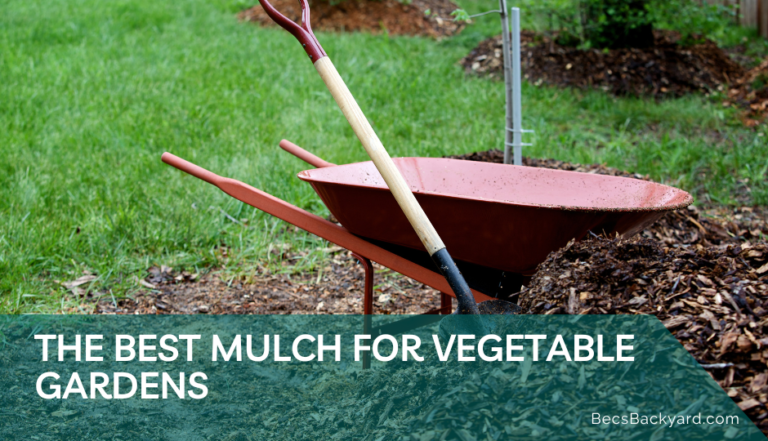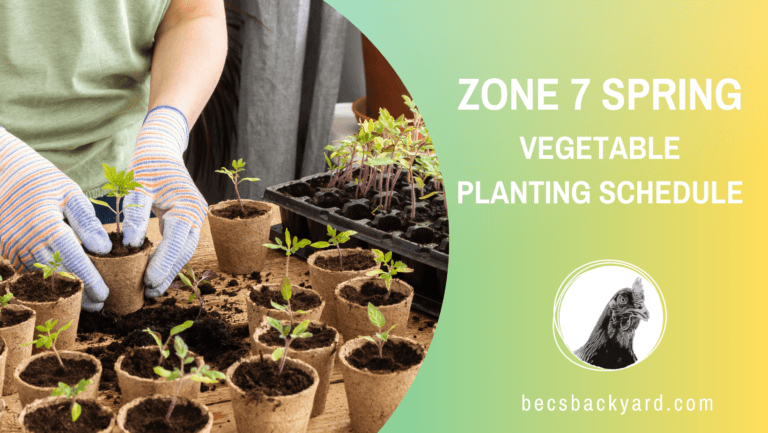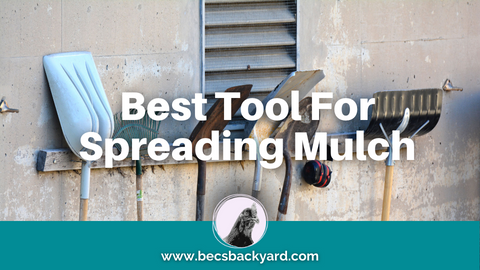How Often Do You Water Tomato Plants: A Guide to Proper Tomato Plant Hydration
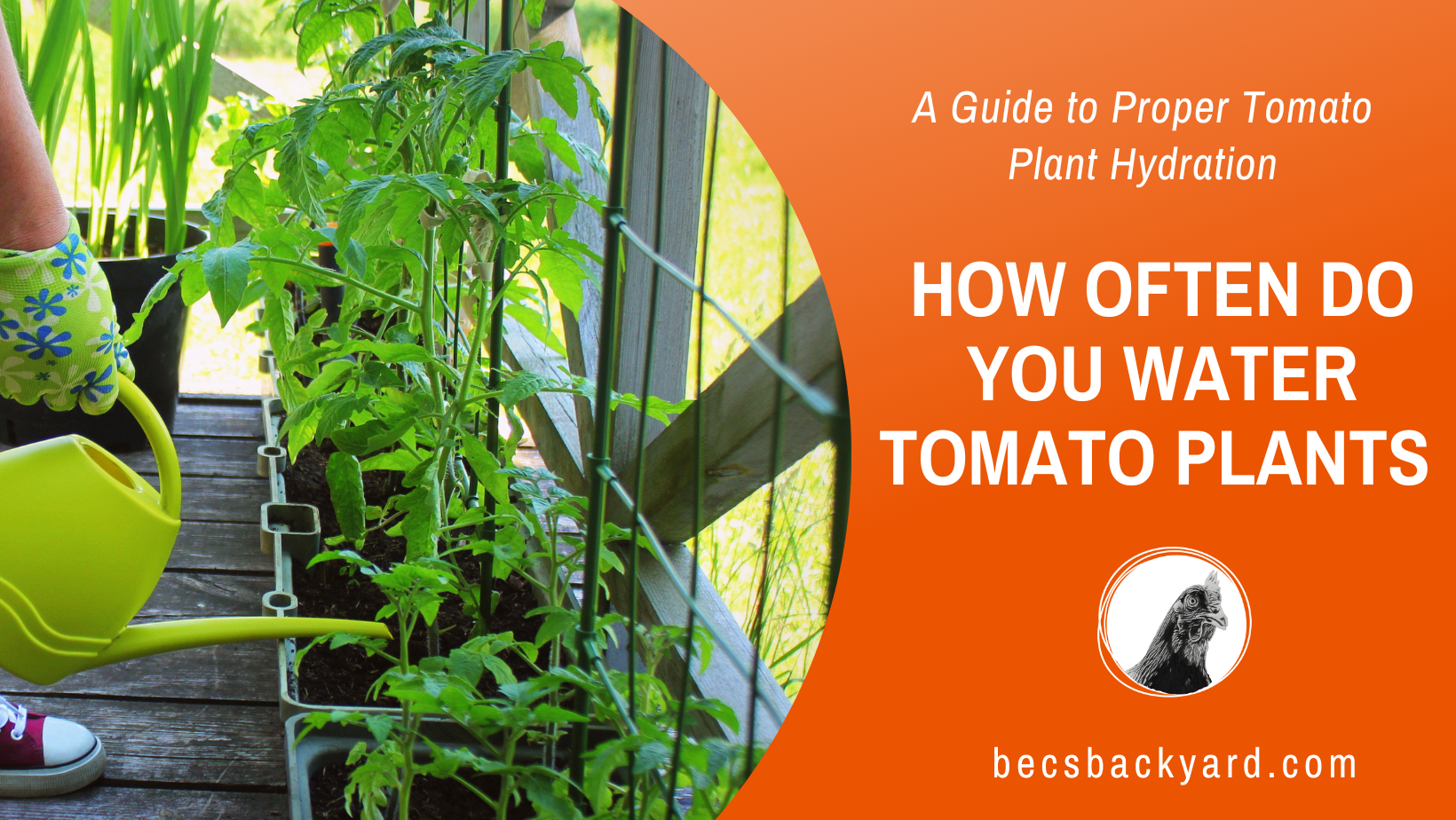
Tomatoes are thirsty plants that require consistent watering to grow and produce a bountiful harvest. So the question is: How Often Do You Water Tomato Plants? Proper watering is essential for the health and vitality of your tomato plant, and it can be a bit tricky to get just right. In this section, we’ll cover the factors affecting watering frequency, signs of overwatering and underwatering, and the effect of climate on watering schedules.
Three Quick Tips – How Often Do Your Water Tomato Plants?
- DEEP WATERING every few days at the base of the plant. Saturating the soil around your tomato plants so the water penetrates deep into the soil, not just the top layer will encourage your tomato plant roots to grow deeper to source moisture. If you are only wetting the top of the soil your plants roots will stay more at the surface and have issues with drying out
- IRRIGATION soaker hoses are a great tool to ensure that water is getting to the right spots. Even better if your soaker hose is hooked up to a timer where it will regularly soak the area providing the tomato plant with the water is requires
- SOIL NOT PLANT Water the soil not the plant, this will prevent leaf burn and also other illness related issues such as fungal growth
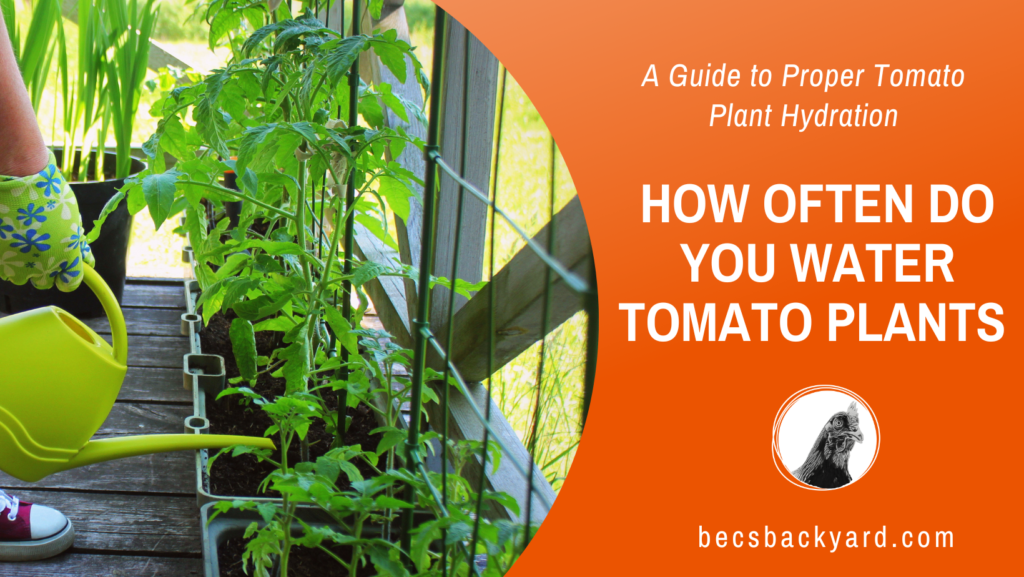
Factors Affecting Watering Frequency
Several factors influence the frequency with which you should water your tomato plants. These factors include the type of soil, the stage of growth, the location, and the climate. Sandy soil requires more frequent watering than clay soil, which holds water well. The stage of growth also affects watering frequency, with young plants requiring more frequent watering than mature plants. The location of your tomato plant also plays a role, with plants grown in containers or raised beds requiring more frequent watering than those grown in the ground.
Signs of Overwatering and Underwatering
Overwatering and underwatering can both be detrimental to the health of your tomato plant. Signs of overwatering include yellowing leaves, stunted growth, and root rot. Signs of underwatering include wilted leaves, dry soil, and slow growth. To avoid overwatering or underwatering your tomato plant, it’s essential to monitor the soil moisture regularly and adjust your watering schedule as needed.
Effect of Climate on Watering Schedule
The climate in which you live can also affect your tomato plant’s watering schedule. Hot and dry climates require more frequent watering than cooler and more humid climates. In general, tomato plants need about 1 to 2 inches of water per week, but this can vary depending on the climate and other factors. To determine the appropriate watering schedule for your tomato plant, monitor the soil moisture regularly and adjust your watering schedule as needed.
In conclusion, understanding the watering needs of your tomato plant is essential for growing a healthy and productive plant. Factors such as soil type, growth stage, location, and climate can all impact the frequency with which you should water your tomato plant. By monitoring the soil moisture regularly and adjusting your watering schedule as needed, you can ensure that your tomato plant receives the right amount of water to thrive.
Proper Watering Techniques : How Often Do You Water Tomato Plants
Watering Tomato Seedlings
When watering tomato seedlings, it is important to keep the soil consistently moist but not waterlogged. Use a watering can with a fine nozzle or a misting spray bottle to avoid disturbing the soil. Water slowly and deeply at the base of the plant to encourage deep root growth. Avoid getting water on the leaves as this can lead to fungal diseases.
Watering Mature Tomato Plants
Mature tomato plants require more water than seedlings, but they still need consistent moisture. Water slowly and deeply at the base of the plant, making sure to saturate the root zone. Avoid getting water on the leaves as this can lead to fungal diseases. Watering in the morning is best as it allows the leaves to dry off during the day, reducing the risk of disease.
Watering Tomato Plants with Fruit
When tomato plants start to produce fruit, they require even more water. Keep the soil consistently moist but not waterlogged. Water slowly and deeply at the base of the plant, making sure to saturate the root zone. Avoid getting water on the leaves as this can lead to fungal diseases. Mulching around the base of the plant can help retain moisture in the soil.
Remember to adjust your watering technique based on the weather and soil conditions. During hot and dry spells, you may need to water more frequently. In heavy clay soils, you may need to water less frequently but for longer periods to allow the water to penetrate the soil.
Overall, proper watering technique is crucial for healthy tomato plants. By watering slowly and deeply at the base of the plant, you can encourage deep root growth and avoid fungal diseases.
Watering Tomatoes in Different Soil Types
When it comes to watering tomato plants, the type of soil they are planted in plays a significant role in how often they need to be watered. Here are some tips on watering tomatoes in different soil types.
Watering in Clay Soil
Clay soil is dense and heavy, which means it retains water for a long time. This can be both a blessing and a curse when it comes to watering tomatoes. On one hand, clay soil provides a consistent source of moisture for your plants. On the other hand, it can also lead to waterlogged soil and root rot if not managed properly.
To water tomatoes in clay soil, it is important to water deeply but less frequently. This will encourage the roots to grow deeper into the soil in search of water. Make sure the soil is moist but not waterlogged, and avoid watering during periods of heavy rain.
Watering in Sandy Soil
Sandy soil is the opposite of clay soil in that it drains water quickly and doesn’t retain moisture well. This means that tomato plants growing in sandy soil may need to be watered more often, about every three or four days.
To water tomatoes in sandy soil, it is important to water more frequently but with less water each time. This will help the soil retain moisture and prevent it from drying out too quickly. Adding organic matter, such as compost or mulch, can also help improve the soil’s ability to retain moisture.
Watering in Raised Beds
Raised beds are a popular choice for growing tomatoes because they provide better drainage and allow for better control of the soil composition. When it comes to watering tomatoes in raised beds, it is important to make sure the soil level is consistent and that there are enough drainage holes to prevent water from pooling.
To water tomatoes in raised beds, it is important to water deeply but less frequently. This will encourage the roots to grow deeper into the soil and help prevent water from evaporating too quickly. Adding organic matter, such as compost or mulch, can also help improve the soil’s ability to retain moisture.
Overall, the key to watering tomatoes in different soil types is to find the right balance between moisture and drainage. By understanding the soil conditions and adjusting your watering schedule accordingly, you can help ensure that your tomato plants grow strong and healthy.
Watering Tomatoes in Pots
Growing tomatoes in pots can be a great way to enjoy fresh produce even if you don’t have a lot of space. However, it’s important to make sure that you’re watering your potted tomato plants correctly to ensure their health and productivity.
Watering Potted Tomato Plants
When it comes to watering potted tomato plants, the key is to keep the soil consistently moist without overwatering. A good rule of thumb is to water your tomato plants when the top inch of soil feels dry to the touch. You can also check the moisture level by sticking your finger into the soil up to the second knuckle. If the soil feels dry at that depth, it’s time to water.
It’s important to note that the amount of water your potted tomatoes need will depend on a variety of factors, including the size of the pot, the type of soil you’re using, and the weather conditions in your area. During hot, dry weather, you may need to water your plants more frequently than you would during cooler, wetter weather.
Moisture Retention in Pots
One challenge of growing tomatoes in pots is that the soil can dry out quickly, especially if the pot is small. To help retain moisture in your potting soil, consider adding a layer of mulch on top of the soil. This can help reduce evaporation and keep the soil moist for longer.
Another option is to use a soil mix that contains moisture-retaining ingredients, such as peat moss or vermiculite. These materials can help hold onto water and release it slowly to the roots of your tomato plants.
Drainage in Pots
Proper drainage is also essential for potted tomato plants. If your pot doesn’t have drainage holes, your soil can become waterlogged, which can lead to root rot and other problems. Make sure that your pot has drainage holes in the bottom to allow excess water to escape.
You can also improve drainage by adding a layer of gravel or small rocks to the bottom of your pot before adding soil. This can help create air pockets and improve water flow through the soil.
In summary, watering potted tomato plants can be a bit tricky, but with the right approach, you can keep your plants healthy and productive. Keep an eye on the moisture level of your soil, use moisture-retaining materials, and make sure your pot has proper drainage to help your plants thrive.
Preventing Diseases Through Proper Watering
Proper watering is essential for the healthy growth of tomato plants. However, overwatering or underwatering your plants can lead to various diseases. In this section, we will discuss how to prevent diseases through proper watering techniques.
Role of Water in Disease Prevention
Water is a vital component for the growth of tomato plants. However, it can also be a breeding ground for various diseases and pests. Proper watering techniques can help prevent diseases by keeping the soil moist but not waterlogged. Overwatering can lead to root rot, while underwatering can cause the plants to wilt and become susceptible to pests and diseases.
Watering to Prevent Blossom End Rot
Blossom end rot is a common disease that affects tomato plants. It is caused by a calcium deficiency in the plant, which leads to the rotting of the fruit. Proper watering techniques can help prevent blossom end rot. It is recommended to water your plants deeply and infrequently rather than shallowly and frequently. This allows the water to penetrate deep into the soil, promoting healthy root growth and calcium absorption.
Watering to Prevent Root Rot
Root rot is another disease that can affect tomato plants. It is caused by overwatering and poor drainage. To prevent root rot, it is important to water your plants only when the top inch of soil is dry. Additionally, ensure that your plants are planted in well-draining soil and avoid overwatering or watering too frequently.
In summary, proper watering techniques are essential for preventing diseases in tomato plants. Overwatering can lead to root rot and other diseases, while underwatering can cause the plants to wilt and become susceptible to pests and diseases. By following the tips outlined in this section, you can ensure that your tomato plants remain healthy and disease-free.
Monitoring Soil Moisture Levels
Keeping track of soil moisture levels is crucial when it comes to watering your tomato plants. Overwatering or underwatering can both have negative effects on plant growth and health. Here are some ways to monitor soil moisture levels:
Using a Soil Moisture Meter
A soil moisture meter is a handy tool that can help you determine when it’s time to water your tomato plants. It works by measuring the amount of moisture in the soil and giving you a reading on a dial or display. Simply insert the probe into the soil and wait for the reading.
When using a soil moisture meter, it’s important to take readings from different areas of your garden to get an accurate picture of soil moisture levels. You should also take readings at different times of day, as moisture levels can vary depending on the time of day and weather conditions.
Understanding Soil Saturation Levels
Soil saturation levels refer to the amount of water that the soil can hold. Different types of soil have different saturation levels, and it’s important to understand the saturation level of your soil to avoid overwatering or underwatering.
Here are some general guidelines for soil saturation levels:
- Sandy soil: Sandy soil drains quickly and has a low saturation level. Watering should be frequent but light.
- Clay soil: Clay soil drains slowly and has a high saturation level. Watering should be less frequent but more heavy.
- Loamy soil: Loamy soil has a balanced saturation level and is ideal for growing tomatoes. Watering should be moderate and consistent.
To determine the saturation level of your soil, you can perform a simple test. Dig a hole about 6 inches deep and fill it with water. Wait 24 hours and check the hole. If the water has drained away completely, your soil has a low saturation level. If there is still water in the hole, your soil has a high saturation level.
By monitoring soil moisture levels and understanding saturation levels, you can ensure that your tomato plants are getting the right amount of water for optimal growth and health.
Irrigation Systems for Tomato Plants
When it comes to watering tomato plants, using an irrigation system can be a great way to ensure consistent and efficient watering. Here are two common irrigation systems that can be used for tomato plants:
Using Soaker Hoses
Soaker hoses are a popular choice for watering tomato plants. These hoses are made of porous material that allows water to seep out slowly and directly into the soil. This method of watering is efficient because it reduces water loss due to evaporation and runoff.
To use a soaker hose for tomato plants, follow these steps:
- Lay the hose along the base of the tomato plants, making sure it is in contact with the soil.
- Connect the hose to a water source and turn on the water.
- Let the water run for about an hour, or until the soil is moist to a depth of at least 6 inches.
- Turn off the water and let the soil dry out slightly before watering again.
Setting Up an Irrigation System
Another option for watering tomato plants is to set up an irrigation system. This can be done using drip irrigation or a sprinkler system.
Drip irrigation involves using a series of tubes and emitters to deliver water directly to the base of the tomato plants. This method is efficient because it reduces water loss due to evaporation and runoff. It is also customizable, allowing you to adjust the amount of water delivered to each plant.
A sprinkler system involves using a series of sprinkler heads to deliver water to the tomato plants. This method is less efficient than drip irrigation because it can result in more water loss due to evaporation and runoff. However, it can be a good option for larger gardens or for those who prefer a hands-off approach to watering.
To set up an irrigation system for tomato plants, follow these steps:
- Determine the type of irrigation system you want to use (drip irrigation or sprinkler system).
- Install the necessary equipment (tubes, emitters, sprinkler heads, etc.) according to the manufacturer’s instructions.
- Connect the system to a water source and turn on the water.
- Adjust the system as needed to ensure that each tomato plant is receiving the proper amount of water.
Remember, regardless of the irrigation system you choose, it is important to check the soil moisture regularly and adjust the watering schedule as needed. Overwatering can be just as harmful as underwatering, so it is important to find the right balance.
Tips for Watering Tomato Plants
When it comes to watering tomato plants, there are a few key tips to keep in mind to ensure that your plants grow healthy and strong. Here are some important things to consider:
Best Time to Water Tomato Plants
The best time to water tomato plants is in the morning, before the heat of the day sets in. This allows the plants to absorb the water they need before the sun evaporates it. Watering in the morning also helps prevent the onset of fungal diseases that can occur when water sits on the leaves for too long.
Maintaining Consistent Soil Moisture
Tomato plants need consistent soil moisture to grow properly. Inconsistent watering can lead to problems like blossom end rot, where the bottom of the fruit turns black and mushy. To maintain consistent soil moisture, aim to water your tomato plants deeply once or twice a week, rather than giving them small amounts of water every day. This will encourage the roots to grow deep and strong, which will help the plants withstand periods of drought.
When to Stop Watering Tomatoes
As your tomato plants near the end of their growing season, it’s important to start tapering off your watering. This will help the plants focus their energy on ripening their fruit, rather than on producing new growth. Stop watering your tomato plants about two weeks before the first expected frost in your area. This will give the fruit time to ripen fully before the plants die off.
By following these tips for watering tomato plants, you can help ensure that your plants grow strong and healthy, and that you get a bountiful harvest of delicious tomatoes.
Frequently Asked Questions
How often should I water my tomato plants?
Tomato plants need consistent watering to thrive. It is recommended to water tomato plants 1 to 2 inches per week. However, the frequency and amount of water needed may vary depending on factors such as weather, soil type, and plant size. A good rule of thumb is to water deeply and infrequently, allowing the soil to dry out slightly between watering sessions.
Is it possible to overwater tomato plants?
Yes, overwatering tomato plants can be harmful. Too much water can lead to root rot, which can stunt the plant’s growth and even kill it. It is important to water tomato plants only when the soil is dry and to avoid getting water on the leaves, as this can lead to fungal diseases.
What are the signs of under-watering tomato plants?
Under-watering tomato plants can cause wilting, yellowing of leaves, and stunted growth. The soil may also be dry and hard to the touch. It is important to water tomato plants regularly to prevent these symptoms.
When is the best time of day to water tomato plants?
It is best to water tomato plants in the morning, as this allows the leaves to dry out during the day and reduces the risk of fungal diseases. Watering in the evening can lead to excess moisture on the leaves, which can promote fungal growth.
How often should I water tomato plants in pots?
Tomato plants in pots may require more frequent watering than those planted in the ground. It is important to monitor the soil moisture level and water when the top inch of soil feels dry to the touch. In hot weather, it may be necessary to water tomato plants in pots daily.
Can I use drip irrigation to water my tomato plants?
Yes, drip irrigation can be an effective way to water tomato plants. It delivers water directly to the soil, reducing the risk of fungal diseases and water waste. It is important to ensure that the drip system is set up correctly and that the plants are receiving enough water.


